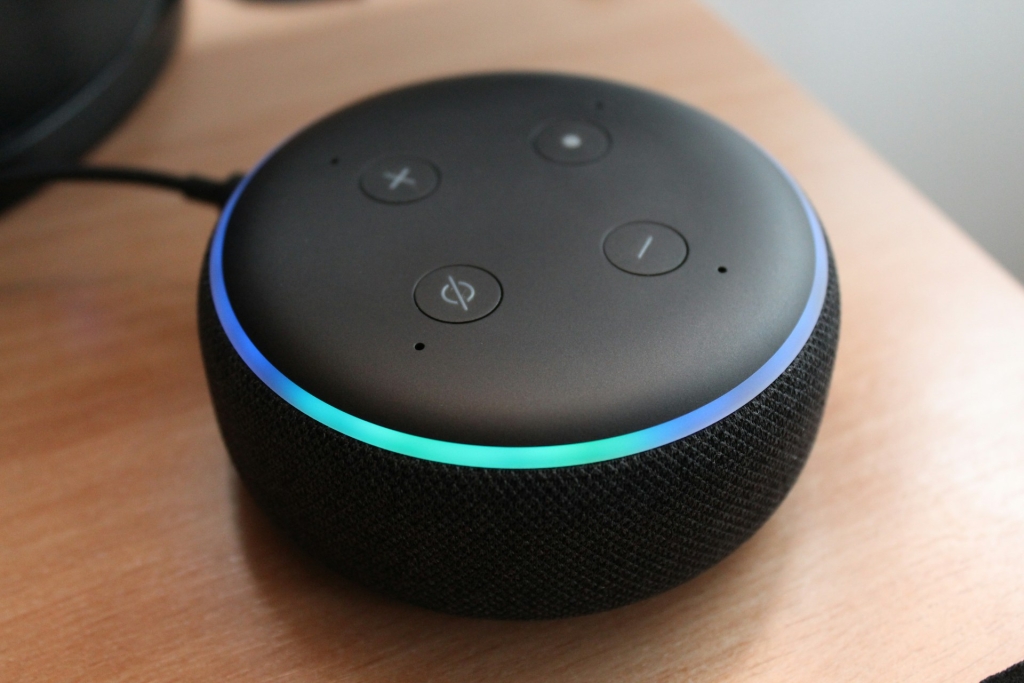As search behavior continues to evolve, your optimization strategies must also evolve. While most marketers are familiar with SEO, the rise of answer engines, generative search tools, and voice platforms has expanded what visibility truly means. To stay competitive and connected to your audience, B2B companies must now consider how they show up across four key areas: SEO, AEO, GEO, and VEO.
Each of these represents a different way potential clients find information. And each requires its own approach to content strategy, structure, and delivery. Understanding them individually and collectively is the first step toward building a sustainable inbound engine for your business.
What is SEO?
Search Engine Optimization (SEO) is the process of improving your website so that it ranks higher on search engine results pages like Google or Bing. It includes technical elements like site speed and mobile friendliness, but also on-page factors such as keyword placement, content depth, and metadata. In a B2B context, SEO is especially vital because prospects often conduct thorough research before making contact. If your content doesn’t appear early in their journey, you risk being excluded entirely.
Unlike paid search, where visibility ends when the budget runs out, SEO provides lasting benefits. Well-optimized pages can generate consistent traffic and leads over time, making it a high-ROI tactic for long sales cycles. A well-optimized site signals to search engines that your business is authoritative, relevant, and trustworthy.
Why SEO Still Matters
In B2B, buyers rarely make impulse decisions. They research vendors, evaluate options, and often consult with peers or team members. SEO ensures your brand becomes a recurring presence during this evaluation process. Whether they search for service comparisons, pricing, or use cases, your content should be ready to inform and influence.
Additionally, search behavior is increasingly tied to user intent. Google now rewards pages that serve the most helpful content, not necessarily the one that uses the keyword the most. High-performing SEO content answers questions, addresses pain points, and reflects real-world language.
SEO Example
Imagine a company that provides managed IT services for the legal sector. Rather than optimizing just for broad terms like “IT support,” the company creates targeted content around “cybersecurity compliance for law firms” or “IT audits in legal practices.” These pages attract niche, high-quality traffic that aligns closely with the firm’s ideal customer profile. Over time, that traffic leads to better-qualified leads and a shorter sales cycle.
What is AEO?
Answer Engine Optimization (AEO) is focused on preparing your content to be featured as a direct response in platforms that surface answers rather than a list of links. Think featured snippets in Google, Bing’s AI-generated summaries, and tools like Perplexity or ChatGPT that synthesize responses from existing content.
While SEO is about being found, AEO is about being selected. Content must be structured to clearly and accurately answer questions. This includes using question-based headers, providing succinct answers, and eliminating unnecessary filler that might confuse the algorithm or dilute the response.
How B2B Marketers Can Leverage AEO
For B2B companies, AEO is a gateway to early-stage awareness. Being the brand that answers industry-specific questions creates a first impression of authority. Buyers remember sources that are helpful, and when it’s time to evaluate solutions more seriously, those same brands often rise to the top.
Optimizing for AEO can mean adding FAQs to product pages, creating standalone glossary or how-to pages, and ensuring content addresses the who, what, where, when, why, and how of each topic. By anticipating the questions your prospects are asking, you position your content to show up not just in Google, but across emerging AI-enhanced tools.
How to Structure Your Content for AEO
To succeed with AEO, your content needs to be organized in a way that machines can easily understand. That means clear headers, direct answers below those headers, and a format that avoids long-winded tangents. Use short paragraphs, plain language, and include relevant data when possible. Structured data markup can further increase your visibility by helping search engines classify your content.
AEO is not about dumbing down your message; it’s about presenting it with clarity. Your subject matter expertise should shine through, but it should be accessible to someone scanning the page in seconds, or to a machine scanning it in milliseconds.
 What is GEO?
What is GEO?
Next in our list is GEO. Generative Engine Optimization (GEO) is a newer idea that focuses on how your content is surfaced and used by AI models and generative search experiences like ChatGPT. These tools don’t just link to your website. They synthesize your content, paraphrase it, or cite it as part of a larger generated answer. Unlike traditional search engines, generative engines operate more like researchers, scanning a wide range of sources and generating original insights based on them.
This shift means your content may be read and interpreted without the user ever visiting your site. While that may seem like a disadvantage, it actually presents a significant opportunity. Being cited by generative platforms can drive awareness and trust even before the prospect reaches your domain.
How Content Gets Used in Generative Engines
AI tools value depth, clarity, and authority. They tend to prioritize well-structured, comprehensive content that covers a topic thoroughly. Shallow or overly promotional content is less likely to be surfaced. This means that investing in long-form guides, industry research, or detailed case studies can yield returns beyond traditional SEO metrics.
Generative engines also favor topical consistency. When your site becomes known for detailed content on a specific subject, it’s more likely to be seen as a “go-to” source. That reputation increases the odds that your brand gets mentioned or recommended in generated responses.
Examples of GEO
Picture a software company offering workflow automation tools for enterprise clients. When a business analyst uses an AI assistant to research “how automation improves procurement operations,” the assistant may reference a whitepaper or blog post from that company. The user might never type a query into Google, but still becomes aware of the brand. GEO ensures your content is eligible for these indirect yet powerful discovery moments. To prepare, focus on evergreen, informative content that answers big-picture questions. Include stats, insights, and use cases. Make sure your author bios, company descriptions, and citations are consistent across platforms to reinforce your authority.
 What is VEO?
What is VEO?
Voice Engine Optimization (VEO) is the process of optimizing your content to be discoverable through voice-based assistants like Siri and Alexa. Unlike typed queries, voice searches are typically more conversational and phrased in full sentences. They also tend to be mobile and context-specific, such as asking for nearby vendors or quickly retrieving information on the go.
In a B2B setting, voice search may seem less relevant at first glance. But, try to consider the growing use of mobile devices in work environments, or the adoption of smart assistants in company vehicles, meeting rooms, and wearable tech. B2B professionals often multitask, and voice search becomes a convenient way to gather information quickly.
Strategies to Optimize for Voice
To align with voice queries, your content should reflect natural language. Use headings that mimic how people ask questions out loud. Instead of a title like “Document Management System Features,” go with “What features should I look for in a document management system?”
Incorporate schema markup for questions and answers, and ensure your site loads quickly and is mobile-friendly. Voice search tends to pull from featured snippets and local listings, so those areas should be refined. If you offer regional services, maintain consistent business profiles on Google and other directories.
Example of VEO
A logistics company that helps with warehousing and supply chain optimization might see value in voice queries like, “Who offers supply chain visibility tools in New York?” If their website includes localized service pages, conversational phrasing, and fast performance, it stands a strong chance of being served as the answer.
Voice isn’t replacing traditional search, but it’s augmenting how and when people engage with content. Being part of that interaction reinforces brand familiarity and increases the likelihood of being remembered when buying decisions are made.
 Why B2B Companies Need to Optimize Across All Four
Why B2B Companies Need to Optimize Across All Four
By now, you’re probably wondering which category is the most important for your business. Here’s why you can’t choose just one.
Meeting Buyers Where They Are
No two decision-makers search the same way. Some begin their journey with a typed keyword. Others use voice to ask quick questions or rely on AI summaries to compare providers. Optimizing across SEO, AEO, GEO, and VEO ensures you’re visible at multiple touchpoints throughout the buying process.
B2B buying journeys are long and involve multiple stakeholders. Some may interact with your blog, others with your product pages or thought leadership content. Each optimization strategy supports a different phase of this journey, from awareness to consideration to decision.
Creating a Holistic Content Strategy
SEO brings steady traffic and trust. AEO positions you as an expert. GEO ensures your content contributes to AI-powered research and insights. VEO captures moments of convenience and urgency. When combined, these tactics form a layered approach to digital visibility that is greater than the sum of its parts. Instead of viewing them as separate disciplines, think of them as different lenses through which your content is consumed. Your job is to make that content valuable and accessible to everyone.
How to Get Started
If you’re building from the ground up, SEO is the natural starting point. It lays the groundwork for site structure, keyword clarity, and authority signals. Once that foundation is strong, AEO becomes a logical next step. Structuring content for answers helps both human readers and algorithms quickly grasp your message.
As your content library grows, GEO should come into focus. Think about the role your blog posts, whitepapers, and case studies might play in AI-generated content. Lastly, don’t ignore VEO. Even one or two well-optimized pages can make a difference when your prospects are searching by voice. The most successful B2B brands won’t be the ones that choose one path over another—they’ll be the ones that connect the dots between them.
Final Thoughts
SEO, AEO, GEO, and VEO represent not just different technical practices, but different user behaviors. Your prospects are searching for solutions in more ways than ever before. Being ready for that diversity is no longer a competitive advantage, it’s a requirement.
At IN2communications, we help B2B brands build search strategies that are modern, human-centric, and conversion-ready. If you’re ready to move beyond keywords and into real visibility, let’s talk.
About IN2communications
IN2communications is an award-winning digital marketing and web design agency helping hundreds of B2B organizations create awareness, boost consideration rates, and generate sales leads.
Our awesome team provides experienced expertise in the following areas: Creative Strategy, B2B Campaigns, Web Development, Video Production, Social Media, Paid Advertising, SEO, Email Campaigns, Blogging, Presentations, Webinars and remarkable Content Creation.




